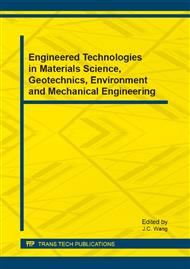p.536
p.540
p.544
p.548
p.552
p.557
p.560
p.567
p.572
The Detection of Road Roughness Based on MEMS Inertial Sensor
Abstract:
Propose a detective method of road roughness based on MEMS inertial sensor. This detective method utilizes a unit integrated MEMS inertial sensors and GPS module to perceive the information of road and then achieve the detection of road roughness. Firstly, establish the Gaussian mixture model (GMM) to process the collecting information of acceleration and gyroscope, extract the abnormal events of road. Secondly, use a Concept-Based data clustering model (CBDCM) to achieve the feature description and extraction of various abnormal events. Finally, utilize the position information supplied by GPS to locate the detected road potholes, achieve the detection and supervision of road roughness. Combined with the designed system to conduct test, the experimental result indicates the Fall-out ratio and Omission ratio of pothole events about this detective method is 7.4% and 5.3%, it indicates that the detective method has a high practical value.
Info:
Periodical:
Pages:
552-556
Citation:
Online since:
February 2013
Authors:
Keywords:
Price:
Сopyright:
© 2013 Trans Tech Publications Ltd. All Rights Reserved
Share:
Citation:


